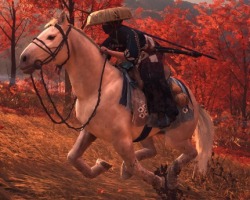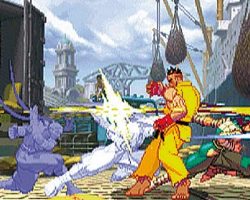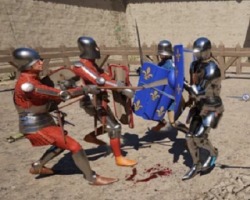Advertisement
Ghost of Yotei

Ghost of Yotei tells the story of a lone warrior named Atsu who returns to her homeland at the base of Mount Yotei after a long absence. The world she once knew has fallen under the control of a group called the Yotei Six — former samurai and mercenaries who seized power during years of unrest. The story begins with Atsu’s journey across frozen fields and abandoned settlements, seeking clues about what happened to her family. The mountain acts as both a spiritual guide and a reminder of her past. Each step she takes brings her closer to uncovering how her personal loss connects to the power struggles that shape the region.
Setting and Atmosphere
The game world stretches across the northern lands of Ezo, built around real historical geography. The player travels through forests, snowy plains, and small villages scattered between ancient shrines and strongholds. Exploration is open-ended, encouraging quiet observation and attention to natural signs instead of visible markers. Villagers react differently depending on Atsu’s reputation, which changes through her choices and actions. The mountain Yotei stands visible from nearly every location, giving a sense of direction without the need for maps or compasses. The world operates on a day-and-night cycle, affecting patrols, lighting, and enemy behavior.
Systems and Combat Flow
The structure of Ghost of Yotei focuses on tactical precision and resource management. Atsu can approach any encounter in multiple ways — directly with weapons or indirectly through stealth and distraction. Combat emphasizes positioning and control rather than raw strength.
Main gameplay systems include:
- stance transitions based on weapon type
- environmental stealth and cover usage
- crafting tools from local materials
- observation of enemy routes and weak points
- exploration-based skill progression
These systems work together to create a methodical rhythm where movement and timing determine survival. The absence of a traditional leveling system shifts focus toward learning through experience.
Narrative and Mission Design
The narrative is divided into regions ruled by each member of the Yotei Six. The player decides which to confront first, shaping the order in which new information is revealed. Each target has distinct motivations and fighting methods tied to their control over specific parts of Ezo. Between main missions, the player can interact with side characters, gather history fragments, or engage in duels that test acquired skills. The story gradually connects personal revenge with broader questions of loyalty and consequence.
Continuation and Vision
Ghost of Yotei expands the samurai narrative into colder, quieter territory. The tone reflects endurance, restraint, and the balance between order and chaos. While the game is separate from previous works in the genre, it inherits their mechanical foundation and redefines it through new landscapes and systems. The world of Ezo becomes both a setting and a metaphor — a place where every silence hides a decision, and every decision changes the land.
Advertisement






















































































Comments